Ellis Shuman's Blog, page 27
February 9, 2019
Ten Years After Bulgaria Began
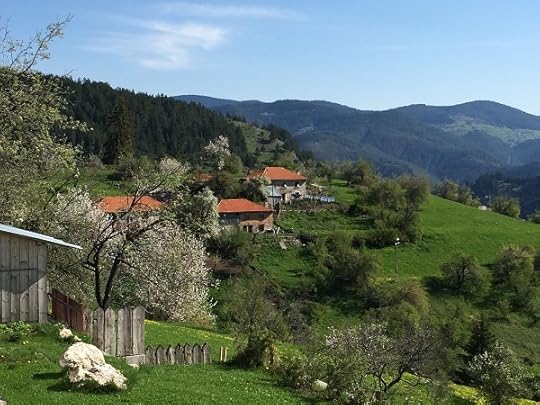
It was on a surprisingly warm January day in 2009 when my flight landed at Sofia International Airport. It was on a freezing, snowy day just three weeks later that Jodie joined me in the Bulgarian capital. We were at the start of my job’s two-year relocation from Tel Aviv to Sofia. Our Bulgarian adventure had begun.
During those two years we traveled extensively around the country. We learned about Bulgaria's history and culture, we visited its villages, enjoyed its cuisine, and climbed its mountains. We studied the Bulgarian language (although we never learned to speak it), and made many friends.
Living in Bulgaria was for us a life-changing experience. As a couple, we had never previously lived outside Israel. We had never lived, for that matter, in a city. It wasn’t all that easy, living away from our family. But, those two years did open our eyes to so many things. We look back fondly at that period knowing that we took full advantage of the once-in-a-lifetime opportunity we had to live in such a fascinating place.
Jodie and I left Sofia in January 2011 and returned to our permanent home in Israel. We went back to Bulgaria in 2015 to visit friends, retrace our footsteps in Sofia, and to explore parts of the country we had not yet seen. We returned to Bulgaria again in the summer of 2016 when The Burgas Affair was published in its Bulgarian edition.
Actually, I visit Bulgaria nearly every day. I continue to think about our lives in Sofia and the wonder of exploring the countryside. When I sit at a coffee shop each morning, I find myself writing new travel reports in attempts to encourage tourists to visit the country. And lately, I have written a number of short stories set in Bulgaria which I hope to publish in the months to come.
I have high hopes of returning to Bulgaria very soon – to hike in the stunningly beautiful Bulgarian mountains. Hopefully there are new Bulgarian adventures yet ahead!
Published on February 09, 2019 22:30
January 21, 2019
My Modern World: The Coffee Machine
Reflections on the 21st century, and how it took me so long to get here.

The last thing I wanted for my birthday was a coffee machine. Sure, the ads with George Clooney promoting Nespresso on television, on the Internet, in print newspapers, and even on billboards were enticing. But coffee machines are expensive and the fancy little coffee pods make drinking coffee almost an unaffordable extravagance. I could do without.
Or could I?
I am a three-cups-of-coffee-a-day person. I enjoy drinking coffee, but there is never enough time to fully appreciate the drink.
The day’s second and third cups of coffee are not as good. Although my office has a coffee machine, it is quite a monstrosity. It offers a variety of drinks, from espresso to latte to cappuccino. But it seems that every time you prepare to make a cup, the warning signals light up. Add more coffee beans. Rinse the machine. Clean. Empty. It’s all too complicated and time-consuming. I don’t need this hassle and this is yet another reason I didn’t want a machine at home. I would never have the time, or patience, to make fancy coffee.
The coffee I drink at work is instant coffee. Taster’s Choice. Nothing exciting, nothing special, but certainly a level above the classic Elite powdered instant coffee that I remember from back when I first began drinking coffee. I can’t imagine drinking that powder today.
Enjoying my Saturday coffee
The only time I fully enjoy the coffee drinking experience is on Saturday mornings. I pour my coffee at breakfast with my wife and then I savor it slowly. I take my time and my cup is still half full an hour later. It’s not that I prefer to drink cold coffee, but just that I want to make my morning drink last as long as it can.
As my birthday approached, I wondered why I shouldn’t take the coffee drinking experience to the next level. Why shouldn’t I have the best coffee on Saturdays, when I have time to fully enjoy it? It would be worth the expense, I convinced myself. I could splurge on Hazelnut. Vanilla. I could even buy coffee pods at Aroma, allowing me to drink my favorite cappuccino at home.
“Okay, let’s get the coffee machine!” I declared, surprising even myself with the decision.
Now, the new, black Nespresso coffee machine sits in a prominent place on the kitchen counter. It rumbles slightly as the coffee drips into my cup. And there’s the foamed milk. I had totally forgotten about this essential part of the drink! As I spoon the foam into my cup, I realize I’ve created the perfect cappuccino. Not only can I fully enjoy my Saturday coffee, but I can have a second, and third cup as well.
I’m experimenting with different flavors and blends. L’OR Ristretto. Elite 100% Guatemala coffee pods. Aroma classic. Nespresso Lungo.
George Clooney would be proud.

The last thing I wanted for my birthday was a coffee machine. Sure, the ads with George Clooney promoting Nespresso on television, on the Internet, in print newspapers, and even on billboards were enticing. But coffee machines are expensive and the fancy little coffee pods make drinking coffee almost an unaffordable extravagance. I could do without.
Or could I?
I am a three-cups-of-coffee-a-day person. I enjoy drinking coffee, but there is never enough time to fully appreciate the drink.
The day’s second and third cups of coffee are not as good. Although my office has a coffee machine, it is quite a monstrosity. It offers a variety of drinks, from espresso to latte to cappuccino. But it seems that every time you prepare to make a cup, the warning signals light up. Add more coffee beans. Rinse the machine. Clean. Empty. It’s all too complicated and time-consuming. I don’t need this hassle and this is yet another reason I didn’t want a machine at home. I would never have the time, or patience, to make fancy coffee.
The coffee I drink at work is instant coffee. Taster’s Choice. Nothing exciting, nothing special, but certainly a level above the classic Elite powdered instant coffee that I remember from back when I first began drinking coffee. I can’t imagine drinking that powder today.
Enjoying my Saturday coffee
The only time I fully enjoy the coffee drinking experience is on Saturday mornings. I pour my coffee at breakfast with my wife and then I savor it slowly. I take my time and my cup is still half full an hour later. It’s not that I prefer to drink cold coffee, but just that I want to make my morning drink last as long as it can.
As my birthday approached, I wondered why I shouldn’t take the coffee drinking experience to the next level. Why shouldn’t I have the best coffee on Saturdays, when I have time to fully enjoy it? It would be worth the expense, I convinced myself. I could splurge on Hazelnut. Vanilla. I could even buy coffee pods at Aroma, allowing me to drink my favorite cappuccino at home.
“Okay, let’s get the coffee machine!” I declared, surprising even myself with the decision.
Now, the new, black Nespresso coffee machine sits in a prominent place on the kitchen counter. It rumbles slightly as the coffee drips into my cup. And there’s the foamed milk. I had totally forgotten about this essential part of the drink! As I spoon the foam into my cup, I realize I’ve created the perfect cappuccino. Not only can I fully enjoy my Saturday coffee, but I can have a second, and third cup as well.
I’m experimenting with different flavors and blends. L’OR Ristretto. Elite 100% Guatemala coffee pods. Aroma classic. Nespresso Lungo.
George Clooney would be proud.
Published on January 21, 2019 22:19
January 5, 2019
"The Burgas Affair" is absolutely gripping

"The Burgas Affair is absolutely gripping. There is tension from the very first page and it sucked me right in. However, there are many other elements beyond the terrorist attack story that I enjoyed. One was the parallel story of a crime boss’s vendetta against Boyko. I liked how one story affected the other, however, sometimes the stories were mixed up a bit too much. Nevertheless, it is through the vendetta story that the reader learns more about Boyko. At first, he comes across as the typical cop we often see in these types of books. He is also pretty pig-headed and sex driven. As the pages turn he softens and his hidden personality comes to light and he becomes much more likable."
Read the rest of the review on Joyful Antidotes.
Published on January 05, 2019 22:09
December 31, 2018
Traveling in Southern Bulgaria: Devil's Throat Cave
I first learned about Devil's Throat Cave from the novels of Bulgarian bestselling author Ludmila Filipova. This is the cave through which Orpheus reportedly made his way to rescue Euridice from Hades, the ancient Greek god of the underworld. Far underground, the Trigrad River disappears in the deep caverns of the cave, never to emerge again into daylight. The cave gets its name from a profile of the devil, which is hard to notice even when pointed out.
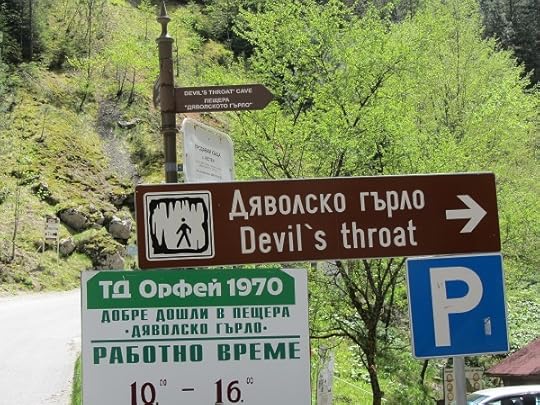
The cave is open every day from 10am to 4pm and entrance is only with a guide, and most of the guides speak English. The entranceway is well lit, cool and dry, but then one reaches the main hall, a cavern so huge that Sofia's Alexander Nevsky Cathedral could easily fit inside with room to spare. With the thunder of the underground river pounding in one's ears, you reach a steep set of wet, concrete stairs leading to daylight high above. This is the halfway point – the weak at heart can go back to the cave's main entrance. I venture upwards, holding onto the handrail for dear life, as the steps are very slippery.
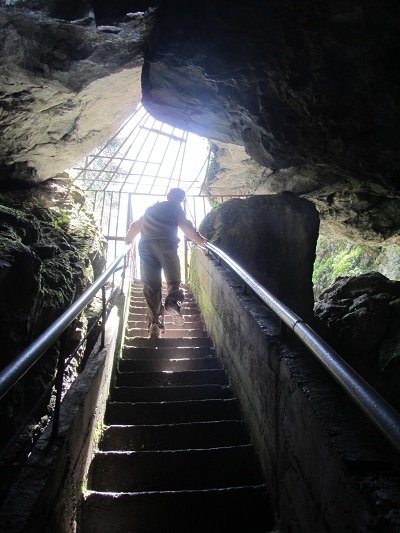
Trigrad village
The final stop of our exploration of the Rhodopes is the village of Trigrad, a few kilometers up the road from the cave. The village's main attractions are a gold-domed mosque and a church, situated next to each other. After democracy came to Bulgaria, Christian residents helped build the mosque and then their Muslim neighbors helped build the church. A strange attraction in Trigrad is the one-room Bear Museum, the smallest museum in all of Bulgaria. A brown bear from the Rhodope Mountains – and there are still some in the wild – would barely fit inside.
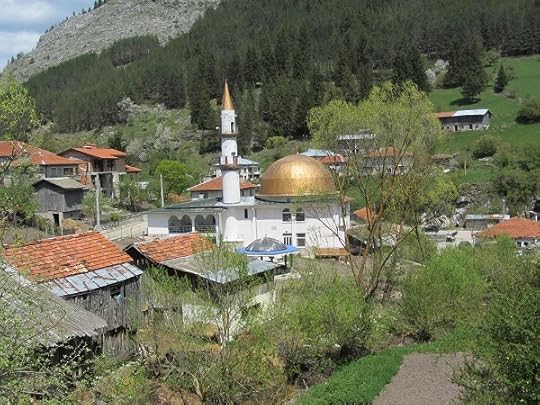
After visits to the cave and the nearby village, there is time for one last meal featuring typical Rhodope cuisine. Tarator soup is a favorite summer treat; it's made from yogurt, cucumbers and cloves of garlic. A companion drink is ayran, which is diluted yogurt mixed with water. Rhodope bean salad is served, along with generous portions of patatnik and a dish of boiled potatoes with eggs, cheese and mushroom.
Our hostess is Izkra, a resident of Trigrad. Izrka doesn't speak any English but with my broken Bulgarian I am able to inform her that we are tourists from Israel. She asks if we are pensioners, and I laugh, writing down the year of my birth. It turns out that Izkra is one year younger than me and our meal ends with Izkra showing us pictures of her grandchildren and my wife showing her pictures of ours.
Izkra's warm hospitality while we eat the tasty dishes served in her tavern, makes for a fitting end to our visit to the wondrous Rhodope Mountains.
Read the earlier parts of this series:
Traveling in Southern Bulgaria: Rhodope Cuisine and Culture
Traveling in Southern Bulgaria: Rhodope Mountains
Traveling in Southern Bulgaria: Bachkovo Monastery
This article was originally published in The Jerusalem Post

The cave is open every day from 10am to 4pm and entrance is only with a guide, and most of the guides speak English. The entranceway is well lit, cool and dry, but then one reaches the main hall, a cavern so huge that Sofia's Alexander Nevsky Cathedral could easily fit inside with room to spare. With the thunder of the underground river pounding in one's ears, you reach a steep set of wet, concrete stairs leading to daylight high above. This is the halfway point – the weak at heart can go back to the cave's main entrance. I venture upwards, holding onto the handrail for dear life, as the steps are very slippery.

Trigrad village
The final stop of our exploration of the Rhodopes is the village of Trigrad, a few kilometers up the road from the cave. The village's main attractions are a gold-domed mosque and a church, situated next to each other. After democracy came to Bulgaria, Christian residents helped build the mosque and then their Muslim neighbors helped build the church. A strange attraction in Trigrad is the one-room Bear Museum, the smallest museum in all of Bulgaria. A brown bear from the Rhodope Mountains – and there are still some in the wild – would barely fit inside.

After visits to the cave and the nearby village, there is time for one last meal featuring typical Rhodope cuisine. Tarator soup is a favorite summer treat; it's made from yogurt, cucumbers and cloves of garlic. A companion drink is ayran, which is diluted yogurt mixed with water. Rhodope bean salad is served, along with generous portions of patatnik and a dish of boiled potatoes with eggs, cheese and mushroom.
Our hostess is Izkra, a resident of Trigrad. Izrka doesn't speak any English but with my broken Bulgarian I am able to inform her that we are tourists from Israel. She asks if we are pensioners, and I laugh, writing down the year of my birth. It turns out that Izkra is one year younger than me and our meal ends with Izkra showing us pictures of her grandchildren and my wife showing her pictures of ours.
Izkra's warm hospitality while we eat the tasty dishes served in her tavern, makes for a fitting end to our visit to the wondrous Rhodope Mountains.
Read the earlier parts of this series:
Traveling in Southern Bulgaria: Rhodope Cuisine and Culture
Traveling in Southern Bulgaria: Rhodope Mountains
Traveling in Southern Bulgaria: Bachkovo Monastery
This article was originally published in The Jerusalem Post
Published on December 31, 2018 22:49
December 23, 2018
Review of The Tattooist of Auschwitz by Heather Morris
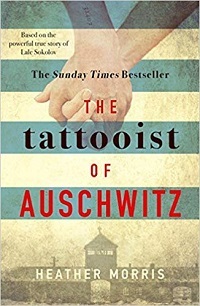 In the opening pages of
The Tattooist of Auschwitz by Heather Morris
(Zaffre, January 2018), Lale Sokolov is standing in a crowded cattle train on his way to an unknown destination. While his fellow travelers are traumatized by the journey, Lale has adopted a “wait and see” attitude, which doesn’t change even when he marches under a gate with the words ‘Arbeit Macht Frei’ wrought from the metal.
In the opening pages of
The Tattooist of Auschwitz by Heather Morris
(Zaffre, January 2018), Lale Sokolov is standing in a crowded cattle train on his way to an unknown destination. While his fellow travelers are traumatized by the journey, Lale has adopted a “wait and see” attitude, which doesn’t change even when he marches under a gate with the words ‘Arbeit Macht Frei’ wrought from the metal.“Just do as you’re told, you’ll be fine,” Lale says to a newfound friend. As fate would have it, Lale’s experiences at the camp are not as horrendous as those of his fellow Jews.
In April 1942, the rate of transports arriving in Auschwitz is accelerating. At the gates of the camp, Jews and gypsies from all over Europe are listed in the Nazi records and their arms are tattooed in green ink. Lale has been appointed to be one of the camp’s tattooists. Even as he defiles the arms of terrified men and women, Lale shows compassion for his fellow prisoners. Perhaps the relative freedom he enjoys as a tattooist will allow him to use his position to help them.
This widely acclaimed novel is based on the true story of Lale Sokolov, how he not only survived his years at Auschwitz-Birkenau, but also found love in the camp. When he inks the serial number into the arm of a young woman, she steals his heart at first glance. This is Gita, his future wife, and their hidden romance in the most difficult of conditions proves that love conquers all. Not for the vast majority of prisoners, of course, but in this specific case.
In recent weeks, several reviewers and researchers have charged that while The Tattooist of Auschwitz is based on a true story, the truth was bent in its portrayal of what actually happened in the Holocaust. Mentioned as an example is the novel’s mention of the use of penicillin in the camp when the drug was not yet readily available during the war. Another challenge to the book’s authenticity is that the number Lale tattooed on Gita’s arm, 34902, could not possibly be accurate.
"It should be ruled out that a prisoner who arrived at the camp on 13 April 1942 could receive such a high number,” states Wanda Witek-Malicka of the Auschwitz Memorial Research Centre. “It is however a fact that on 13 April 1942 a female transport from Slovakia arrived at Auschwitz - but they were given numbers from 4761 to 5203. Therefore, Gita Furman was either brought to the camp on a different date or received a different number than that indicated in the book.”
Writing in The New York Times, Christine Kennedy says that this "seemingly pointless error [about the Auschwitz number system] ... undermines the credibility of other stories [in the novel].”
How much leeway do authors have when they create fiction based on true stories? How far can you misdescribe the facts, or misstate the details, and still present an accurate depiction of historical events?
It’s important to tell the story
Very soon, there will be no remaining Holocaust survivors. There will be no further firsthand accounts of what it was like to be imprisoned in the camps. More troubling, to me, is the danger that future generations may not find it important to learn what this tragic period in our history was all about. It is important, therefore, to tell the story, even if it is embellished somewhat in fiction.
I personally don’t think that mentioning an inaccurate serial number detracts from the important message this book is giving to its readers. While the truth may have been bent for dramatic purposes, the novel is reaching a large audience that would never have otherwise been exposed to the horrors of the Holocaust.
What bothers me more about The Tattooist of Auschwitz is that while it is a quick, compelling read, the book is not well written. The dialogue sounds false, almost as if someone from the modern era has been transported back in time to speak to the camp’s inmates. The narrative that glosses over the harsh conditions of the camp to focus on a love affair seems over romanticized. Most readers will probably overlook the simple prose and the characters’ lack of depth to see the bigger picture.
Every survivor of the Holocaust has a story to tell. This story, of how Lale and Gita survived the camps, is one that will remain in the reader’s memory for a long time.
Heather Morris , a native of New Zealand, now lives in Australia. In 2003, she was introduced to an elderly gentleman, Lale Sokolov, who ‘might just have a story worth telling’. Morris originally wrote Lale’s story as a screenplay – which ranked high in international competitions – before reshaping it into her debut novel, The Tattooist of Auschwitz.
Buy The Tattooist of Auschwitz and read it now!
Originally published on The Times of Israel.
Published on December 23, 2018 22:03
December 14, 2018
Review of The Great Alone by Kristin Hannah
 Right from the start I will tell you that I don’t usually read this genre—the coming-of-age story of a teenage girl caught up in her parents’ stormy relationship—but there is one reason that I couldn’t put down The Great Alone by Kristin Hannah (St. Martin's Press, February 2018). To say it in a word – Alaska.
Right from the start I will tell you that I don’t usually read this genre—the coming-of-age story of a teenage girl caught up in her parents’ stormy relationship—but there is one reason that I couldn’t put down The Great Alone by Kristin Hannah (St. Martin's Press, February 2018). To say it in a word – Alaska.Hannah’s vivid descriptions make America’s last frontier come alive. “It was otherworldly somehow, magical in its vast expanse, an incomparable landscape of soaring glacier-filled white mountains that ran the length of the horizon, knife-tip points pressed high into a cloudless cornflower-blue sky.”
In Hannah’s writing, all your senses are drawn into Alaska’s allure. “The air smelled briny, deeply of the sea. Shorebirds floated on the wind, dipped and rose effortlessly.”
This is Alaska, in all of its beauty and all the perils of living there. The extreme cold, the snowstorms, the brown bears and the packs of wolves, the king salmon and the bald eagles, and more than anything else, the isolation.
Daylight in the winter months is limited to a few hours a day. The family’s isolation results in Ernt’s recurring nightmares. He becomes paranoid, jealous, violent. Leni is spared her father’s anger, but his abusive treatment of her mother comes in waves of madness.
The only comforting part of Leni’s life is her classmate Matthew, a neighbor who becomes her closest friend. When Ernt suspects Matthew’s father of flirting with Cora, he forbids Leni from seeing him. Like any Romeo-and-Juliet romance, this one, too, seems bound for a tragic ending.
If it were not for its setting, I would consider The Great Alone to be nothing more than well-written women’s fiction. Surely there have been other novels like this one, telling the story of a teenager struggling to survive her father’s rage and her mother’s silent acquiescence of her husband’s inability to change. But, The Great Alone transcends that genre.
“This state, this place, is like no other. It is beauty and horror; savior and destroyer. Here, where survival is a choice that must be made over and over in the wildest place in America, on the edge of civilization, where water in all its forms can kill you, you learn who you are... You learn what you will do to survive.”
The Great Alone sweeps you into a vast, untamed wilderness. There is no middle ground in Alaska, no safe place. You’ll find yourself captivated not only by the state’s unique beauty, but also by the author’s compelling narrative and her eloquent writing. Highly recommended!
Kristin Hannah is an award-winning and bestselling author of more than 20 novels including the international blockbuster, The Nightingale. A former-lawyer-turned writer, she lives in the Pacific Northwest with her husband.
Published on December 14, 2018 22:00
December 1, 2018
Traveling in Southern Bulgaria: Rhodope Cuisine and Culture

An exploration of the Rhodope Mountains in southern Bulgaria would not be complete without taking advantage of the opportunity of tasting the region’s unique, and tasty cuisine.
During our stay at Villa Gela we are spoiled with the food. The owners’ family owns the Terra Tangra Winery located on Sakar Mountain, 200 kilometers to the east. We are served Yatrus Syrah and the white Tamyanka. We start our meal with homemade rakia – the national, very strong fruit brandy of Bulgaria. In the mornings we drink a mixture of vinegar and honey that cleans one’s digestive system.

In the evenings we eat fresh beet salad and green salads including shopska, which is basically a Greek salad covered with a sprinkling of a white, salty cheese similar to feta. Potatoes are the main starch of the Rhodopes. Patatnik arrives at our table; I describe these tasty fried patties as latkes on steroids. One specialty dish which we can't identify turns out to be lightly fried nettles – delicious.

Bulgarian yogurt is probably the best yogurt in the world, due to the aptly named Lactobacillus bulgaricus bacteria. Bulgarian yogurt topped with homemade honey or jam is simply divine. At breakfasts we also eat banitsa – a traditional filo pastry stuffed with either cheese or pumpkin – and palachinki, which are crepe-like pancakes.

Other dishes typical of Rhodope dining are Smilyan bean salad served with roasted peppers and onions; hominy sindermio, which is made from coarsely ground corn, butter and cheese; and a huge selection of fresh salads. Those who maintain kosher-style lifestyles will have no problem dining in the Rhodopes, although many restaurant owners don't speak English and their menus are only available in Bulgarian.


Gela village is quite small; only 37 residents live there year round. Each family has its own vegetable plot, and in some cases, its own cow. Bells can be heard on the hillsides as goats graze amidst the thick summer grasses. Before 1944, local shepherds would herd their flocks into Greece.
The village is famous as being the birthplace of Orpheus – the mythical Greek musician, poet, and prophet. Legends of Orpheus center round his musical attempts to rescue his wife Eurydice from the underworld. We would soon see where this legend was born.
Rhodope culture
A few words should be said about the music and traditions of the Rhodopes. The mountains are the best place in all of Bulgaria to hear the gaida, a sheep- or goat-hide bagpipe common to the Balkans and southeast Europe. Gaidas look and sound very different from the bagpipes of Scotland. The kaba gaida is much larger and lower pitched than other instruments and is native to the Rhodopes. A gaida festival is held annually near Gela. I find the lyrical call of the gaida mesmerizing, but it is often accompanied by incomprehensible verses describing love and village life.
Another annual event is held in March in Shiroka Laka. Men dress up as animals with colorful masks on their faces and bells ringing from their waists. These strange mummers are called kukeri; they dance through the streets in efforts to chase away bad thoughts and evil spirits.
At all times of the year, the Rhodopes serve as a popular destination for visitors. One of the most striking natural features is Trigrad Gorge, a canyon of vertical marble rocks. The Trigrad River flows through the gorge until it plunges into one of deepest, most mysterious caves in Bulgaria.
To be continued...
Read the earlier parts of this series:
Traveling in Southern Bulgaria: Rhodope Mountains
Traveling in Southern Bulgaria: Bachkovo Monastery
This article was originally published in The Jerusalem Post
Published on December 01, 2018 22:21
November 9, 2018
November Sale: The Burgas Affair on Sale at $0.99
For a limited time,
The Burgas Affair
is on sale at $0.99!
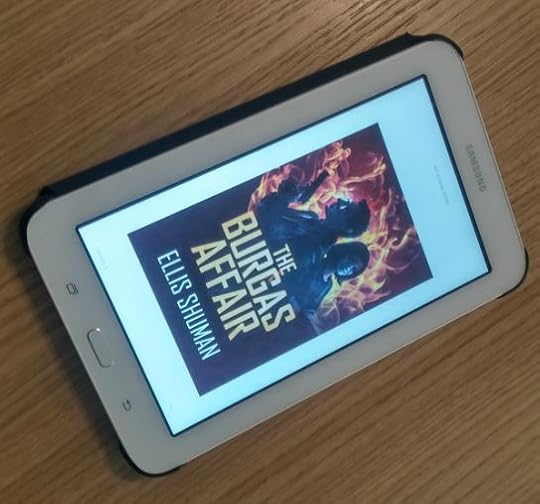
What readers are saying about The Burgas Affair:
"Each scene is packed with suspense"
"A real page turner from start to finish"
"Fast paced, action packed"
"The action is relentless, spilling across Bulgaria and Israel to great effect"
Get your copy of The Burgas Affair today!

What readers are saying about The Burgas Affair:
"Each scene is packed with suspense"
"A real page turner from start to finish"
"Fast paced, action packed"
"The action is relentless, spilling across Bulgaria and Israel to great effect"
Get your copy of The Burgas Affair today!
Published on November 09, 2018 06:51
October 27, 2018
Review of The Astronaut’s Son by Tom Seigel
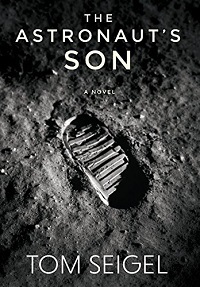 On July 20, 1969, Neil Armstrong became the first man to walk on the moon, a historic event that I remember watching on television as a boy. Eleven other astronauts would follow in Armstrong’s footsteps until the Apollo program was abandoned at the end of 1972. We have not returned to the moon since.
On July 20, 1969, Neil Armstrong became the first man to walk on the moon, a historic event that I remember watching on television as a boy. Eleven other astronauts would follow in Armstrong’s footsteps until the Apollo program was abandoned at the end of 1972. We have not returned to the moon since.In the novel The Astronaut's Son by Tom Seigel (Woodhall Press LLP, September 2018), Israeli astronaut Avi Stein was scheduled to fly on a later Apollo mission but died of a heart attack shortly before liftoff. “His dream of going to the moon lives on in all of us,” his son, Jonathan, says in tribute.
Speaking to an audience of his employees and members of the media, Jonathan—a multi-millionaire engineering and computer genius—announces his company’s private lunar venture. “We have been away far too many years,” he says. “From the surface of the Moon, we will take a giant leap forward into outer space for the benefit of ourselves and our posterity.” Jonathan is to be the mission’s commander.
In his investigations, Jonathan is on his own. “There were no footprints to guide him, no guardian angel.” His pregnant wife, Susana, suggests that he abandon what appears to be a foolhardy search for proof of a government coverup. “You can’t change what happened, and you’ll never be able to make perfect sense of the past,” she warns him. “There’s always incompleteness. It’s time to move on, think ahead, think of us.”
Yet, Jonathan is determined to realize his father’s unfinished journey, but will there be a price to pay for learning the truth?
While The Astronaut’s Son, the novel, may not exactly rocket into space, it does make for a fast-paced read with an alternate approach to a very timely subject. Fifty years after the first lunar landing, we may soon witness a renewed commitment to space exploration. If Jonathan’s dream is realized—a dream he shared with his father, the astronaut—one small step for man may indeed lead to a giant leap for mankind.
Tom Seigel worked for eight years as an Assistant U.S. Attorney in Brooklyn. As Deputy Chief and Chief of the Justice Department's Organized Crime Strike Force, he prosecuted several high-ranking members of the Lucchese, Bonanno, and Colombo families; as well as heroin traffickers; corrupt NYPD detectives; and NBA referee Tim Donaghy. After twenty years as a litigator he earned an MFA in fiction writing. The Astronaut's Son is his debut novel.
Buy The Astronaut's Son and read it now!
Originally published on The Times of Israel
Published on October 27, 2018 23:02
October 16, 2018
Traveling in Southern Bulgaria: Rhodope Mountains

The Rhodopes are known for their unique geological formations. The mountains are set apart by river gorges; there are many deep caves cut into the karst landscape. In the winter months, the snow-covered peaks are perfect for skiing – Pamporovo is one of Bulgaria's most popular ski resorts. In the summer, the hillsides are painted bright green and covered with wild flowers. With snow seen on the surrounding mountain tops, one has a feeling of visiting a "Sound of Music" movie set.
There are many small, picturesque villages perched on the hillsides and in the valleys below. It is said that the region has the highest number of centenarians in the country. This is because the villagers lead simple, stress-free lives; eat homemade yogurt; enjoy healthy vegetables grown in the small plot outside their homes; and, of course, breathe the crisp mountain air.
Bulgarians as a whole are very hospitable, but residents of the Rhodopes are particularly friendly to visitors, especially to travelers from overseas. It’s a bit difficult to communicate with the older generation, but young Bulgarians are fluent in English as well as many other European languages.
Besides the off-season lodgings available in the kitschy resort hotels of Pamporovo, most of the places to stay in the region are bed and breakfasts in private homes, most of which cater solely to Bulgarian natives. Western visitors will find the hosts very friendly, but without the ability to converse in English, the stay could be less than perfect.
Jodie and I head instead to Villa Gela, located some twenty kilometers from the Greek border. We follow road signs conveniently listing the villages in both Cyrillic and English, and arrive in the amusingly-named town of Shiroka Laka. After driving past homes built in the style of 19th century Bulgarian renaissance architecture, we turn off the highway and follow the route to the village of Gela. A steep ascent on a paved road brings us to an altitude of 1,500 meters and the instructions we had received make it very easy to reach our destination.

At the villa we are greeted by our hostess, Darina, a professional travel guide who has traveled herself. Darina speaks Bulgarian, Serbian and perfect English. Darina's family originates in Ruse, on the banks of the Danube; they came to the Rhodopes because Ivan, her uncle, suffered from asthma and needed to move into the mountains. The family fell in love with the location, immediately bought property and began renovating a collapsed wooden home. Completing our complement of friendly hosts is Dimka, the resident cook who creates tasty, innovative meals for the guests.
Villa Gela is luxurious and ultra-modern – not your typical Rhodope accommodations – but the hospitality is genuine. There is an array of solar panels on the roof; the mountains get some 240 days of sunlight a year. Extensively renovated, the villa was styled by interior decorator Marja Walters and has six bedrooms, each of them uniquely themed. There is an Oriental Room, a Wood Room, and a Striped Room. Our bedroom has a Chihuly sculpture encased in glass, and in fact, the feeling is that we are staying inside a museum, although a very homey, comfortable one.
All of the bedrooms in the rooms, but no televisions. Wifi is available throughout the premises. The living room is spacious, with large windows offering views of the surroundings. The long dining table is right behind the sofas; elegant dishes and glassware complete the five star level of accommodations.
Villa Gela was selected as the Best Ski Chalet in Bulgaria in both 2013 and 2014, in a vote among an international online audience, and it's clear to see why.
We assumed that lodging at the villa must be very expensive, but as listed on the villa's website (), half board is £100 per person. The maximum number of guests is twelve; two children with their parents in the family bedroom would be very comfortable.
Our adventures in the Rhodopes were just getting started!

To be continued...
Read the first part of this series: Traveling in Southern Bulgaria: Bachkovo Monastery
This article was originally published in The Jerusalem Post.
Published on October 16, 2018 22:12



